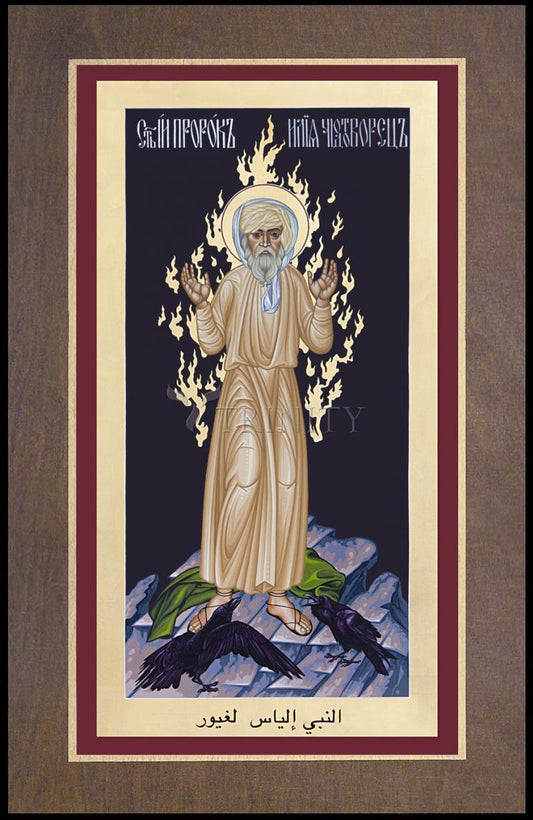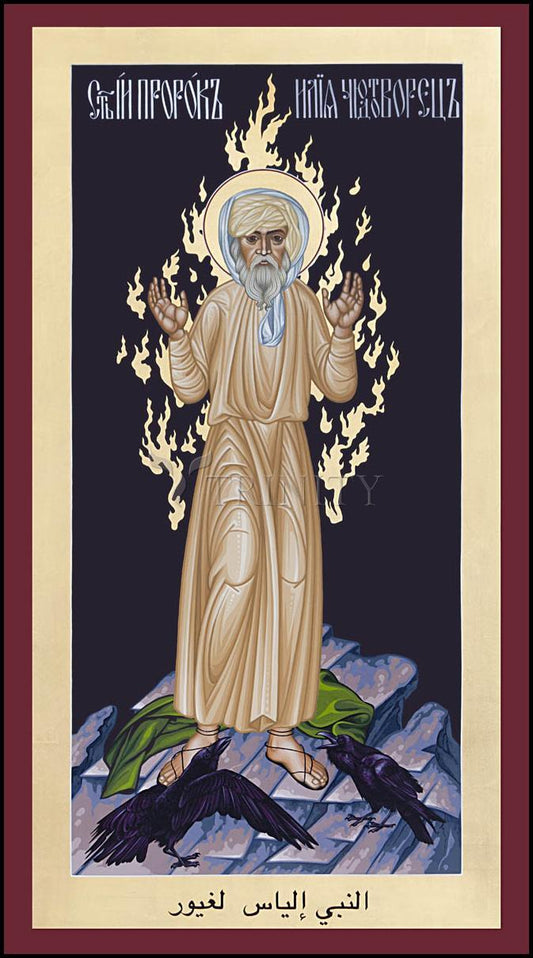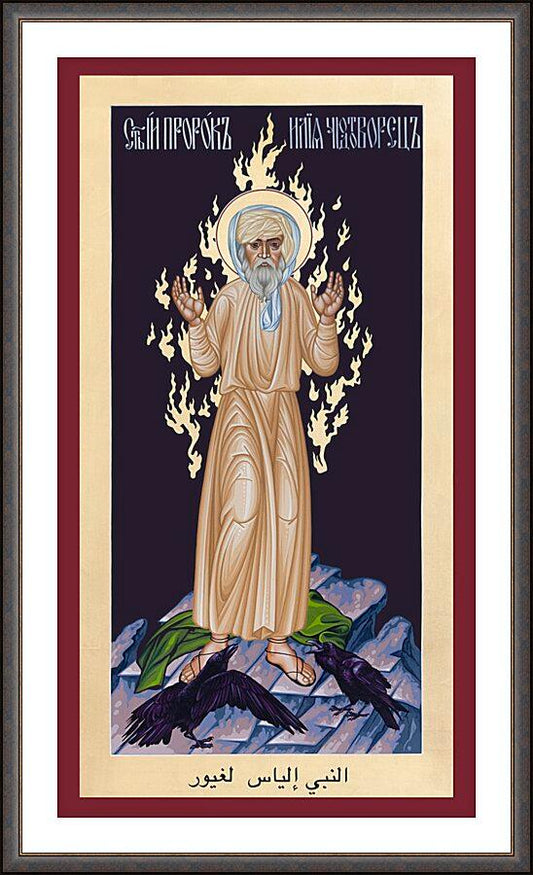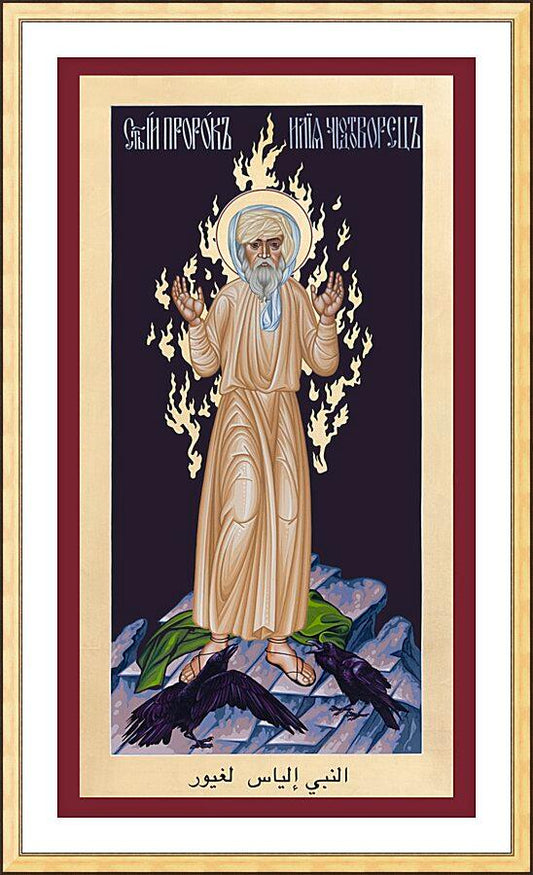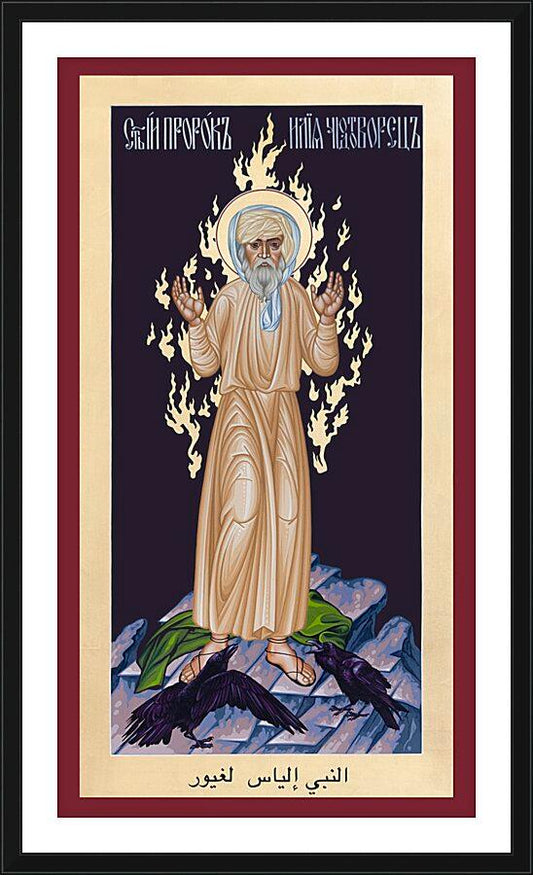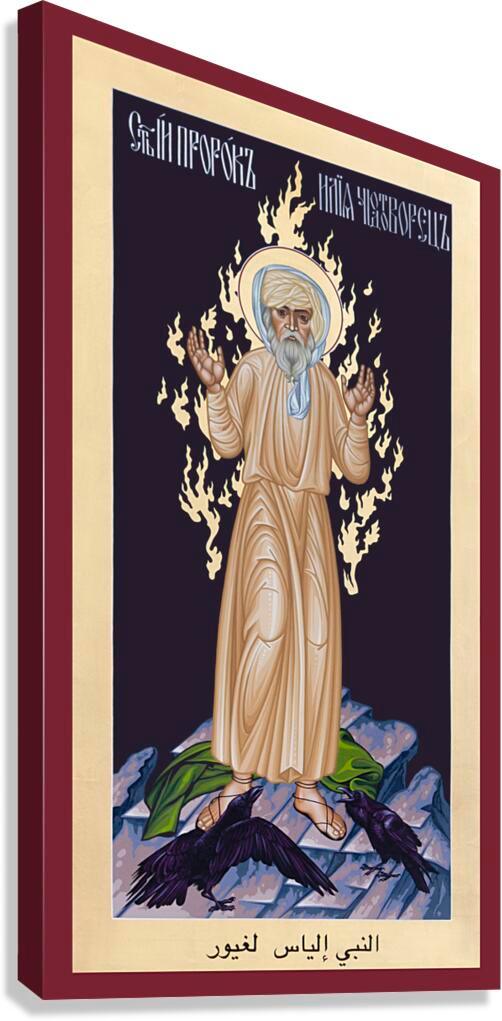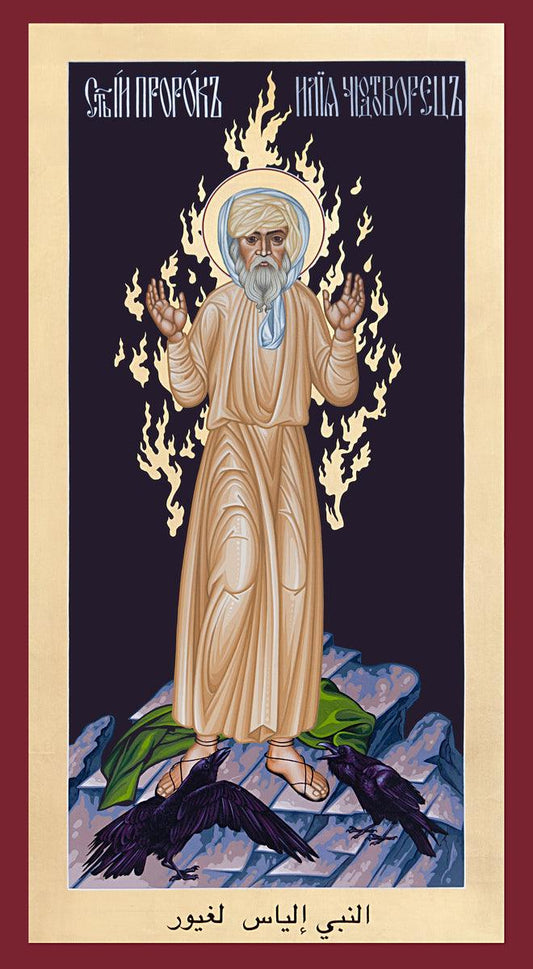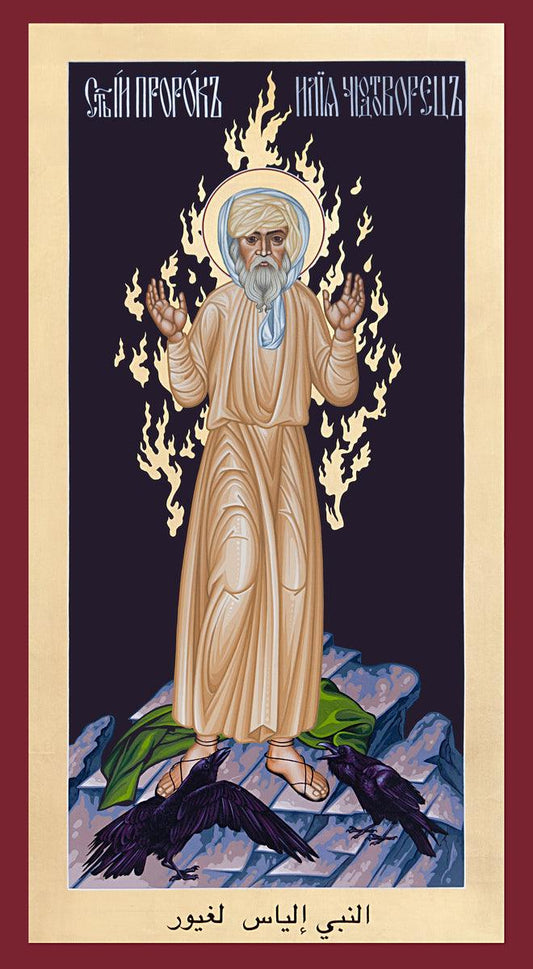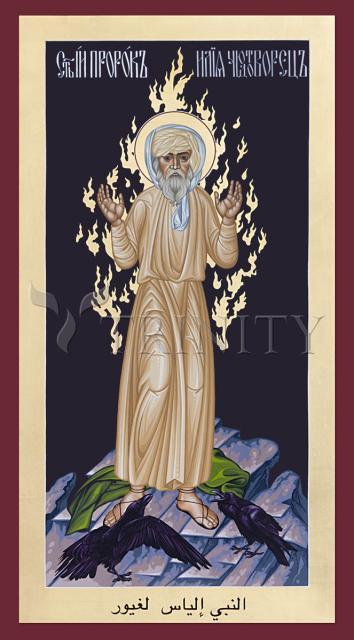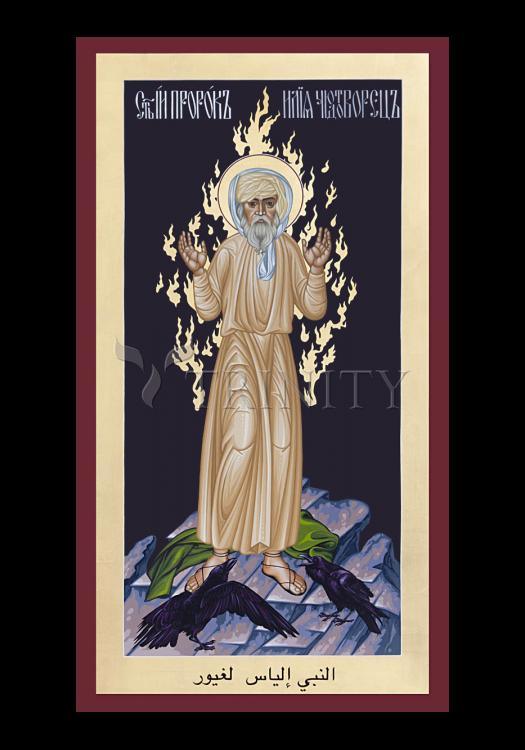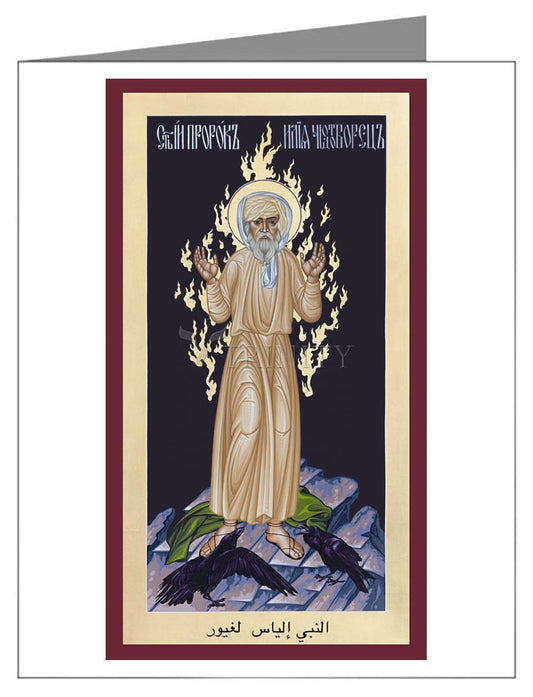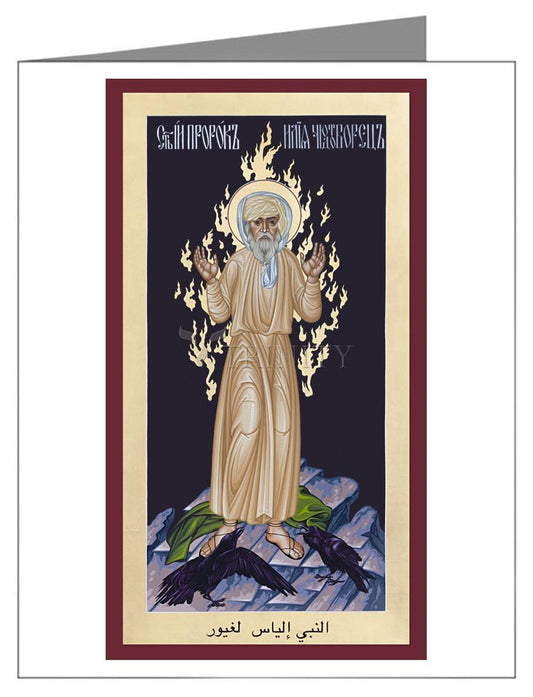Elias the prophet stood up, as a fire, and his word burnt like a torch.... Blessed are they that saw thee, and were honored with thy friendship." (Ecclesiasticus 48: 1, 11)
"Elias indeed shall come, and restore all things." (Matthew 17:11)
The greatest of the Old Testament prophets is Elias (Elijah.) The life of St. Elias can best be described by two phrases which he often used: "As the Lord liveth, in Whose sight I stand" (3 Kings 17:1), and "With zeal have I been zealous for the Lord God of Hosts." (3 Kings 19:10) Whatever his exterior activities, the prophet remained aware of the constant presence of God. He possessed an unflagging desire to serve his Lord, even in moments of darkness and discouragement. (3 Kings 19: 4, 14)
Elias, called "the Thesbite," first manifested himself during the three year drought and famine by which the God of Israel punished His erring people, who had been led into idolatry by King Ahab and Queen Jezebel. (3 Kings 17:1) Described as "a hairy man" (4 Kings 1:8), he usually could be found praying in remote desert and mountain retreats. It was in the solitude of Mt. Horeb that he experienced the majesty of God, not in fire or earthquake, but in the serenity of a "whistling of gentle air." (3 Kings 19:12) His usual haunt seems to have been Mt. Carmel, where he had the famous contest with the 450 prophets of Baal. (3 Kings 18:19) He defeated them by calling down fire from Heaven (3 Kings 18:38), setting the precedent for those who wish to follow in his footsteps as "Carmelites," whose role is to pray for the fire of graces, especially in times of crisis for the Church.
It was also on Mt. Carmel that Elias, deep in prayer, sent his servant to scan the horizon for rain. Finally, after looking seven times, the servant reported "a little cloud...like a man's foot arising out of the sea." (3 Kings 18: 43-44) Tradition holds that Elias knew the cloud to be a sign of the coming of the Immaculate Virgin Mary, Mother of the Redeemer. "Henceforward, Carmel was sacred in the eyes of all who looked beyond this world." (Dom Gueranger's The Liturgical Year, Vol. XIII)
St Elias came to have many disciples called the "sons of the prophets." (4 Kings 2:5) This group was seen as being the origin of the Carmelite order, since for generations to come, holy men and hermits would seek to live a life of solitude and prayer in imitation of Elias and the "sons of the prophets." Elias chose Eliseus (Elisha) to be his successor. (3 Kings 19:19) In a remarkable and moving scene, Elias is mysteriously assumed into heaven, riding in a fiery chariot. Before the dramatic departure, Eliseus begged Elias for a double portion of his spirit (4 Kings 2:9)
As Elias is carried away in the whirlwind, he bequeaths to Eliseus his mantle, along with his "double spirit." (4 Kings 2:13) Eliseus continued the work of fighting idolatry, working many miracles which surpassed those of his master. Can the mantle of Elias be seen as prefiguring the brown scapular, which symbolizes the spirit of prayer and penance, the spirit not only of Elias, but of Mary?
The history of Elias the prophet does not end with his assumption, for he makes an appearance in the New Testament as well. He and Moses converse with Jesus at His Transfiguration on Mt. Tabor (Matthew 17:3), as witnesses of the divinity of the Son of God. Afterwards, the Apostles question Our Lord about Elias. "Why then do the scribes say that Elias must come first?" (Matthew 17:10) They refer to the prophecy of Malachias: "Behold, I will send you Elias the prophet before the coming of the great and dreadful day of the Lord." (Malachias 4:5) Jesus assures them that Elias has preceded him in person of the John the Baptist (Matthew 17:12), who had the "spirit and power of Elias." (Luke 1:17)
However, Our Lord makes it clear that "Elias indeed shall come and restore all things." (Matthew 17:11) According to the scripture scholar Fr. Herman Kramer: "'John the Baptist did not usher in the great and dreadful day of the Lord,' as was foretold of Elias. That day will be the destruction of Antichrist...." (Fr Herman Kramer, The Book of Destiny, 1975)
Most of the early fathers of the Church identify Elias as one of the "two witnesses" in Chapter 11 of the Apocalypse, who do battle with the Antichrist. The two witnesses are martyred by the son of perdition, but their resurrection and ascension into Heaven ushers in the final defeat of "the beast." (see Apocalypse 11) The exact manner in which such cryptic prophecies will be fulfilled remains to be seen. It is interesting, however, that Carmelites have always used red vestments on July 20 in honor of the martyrdom of Elias that is to come.



